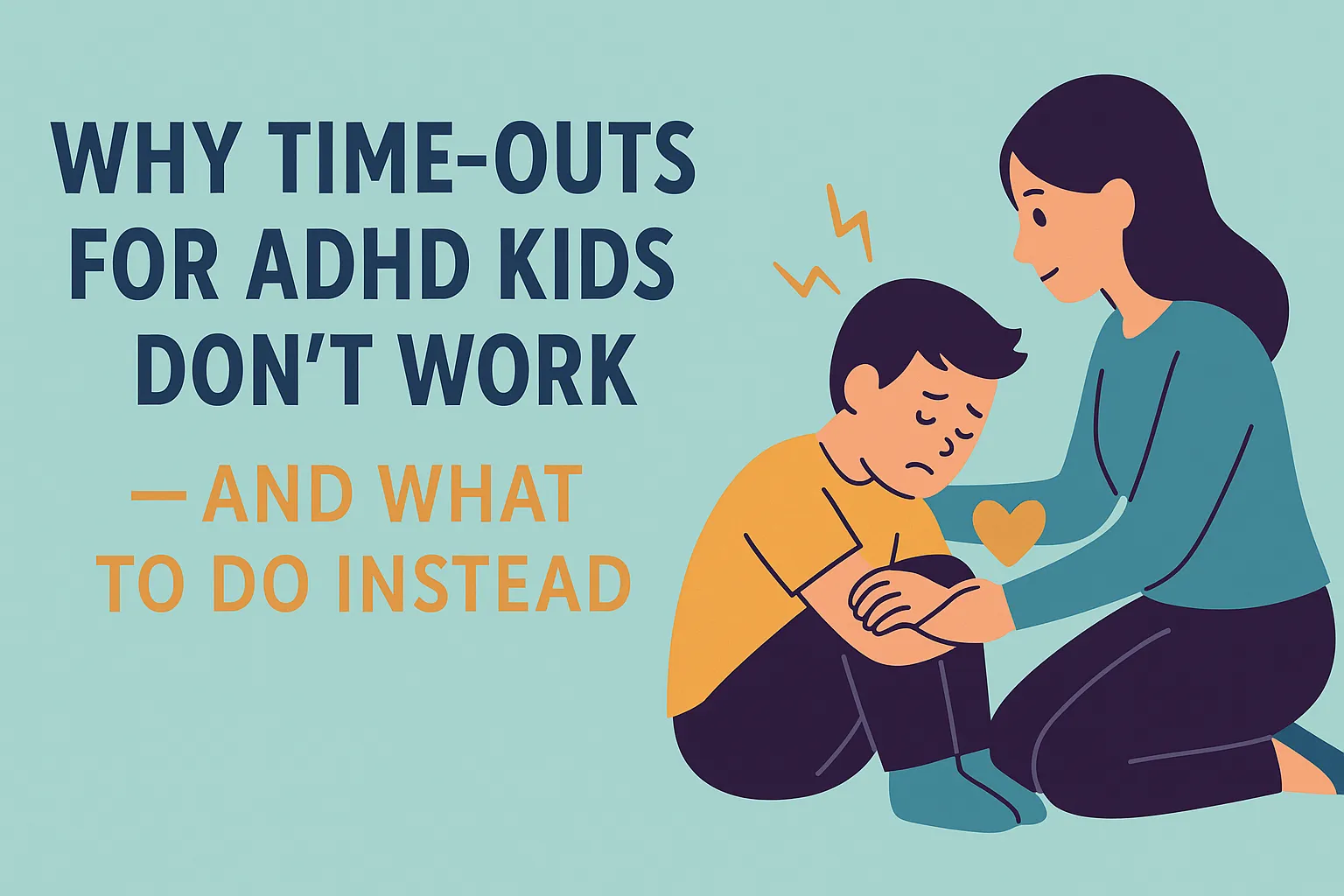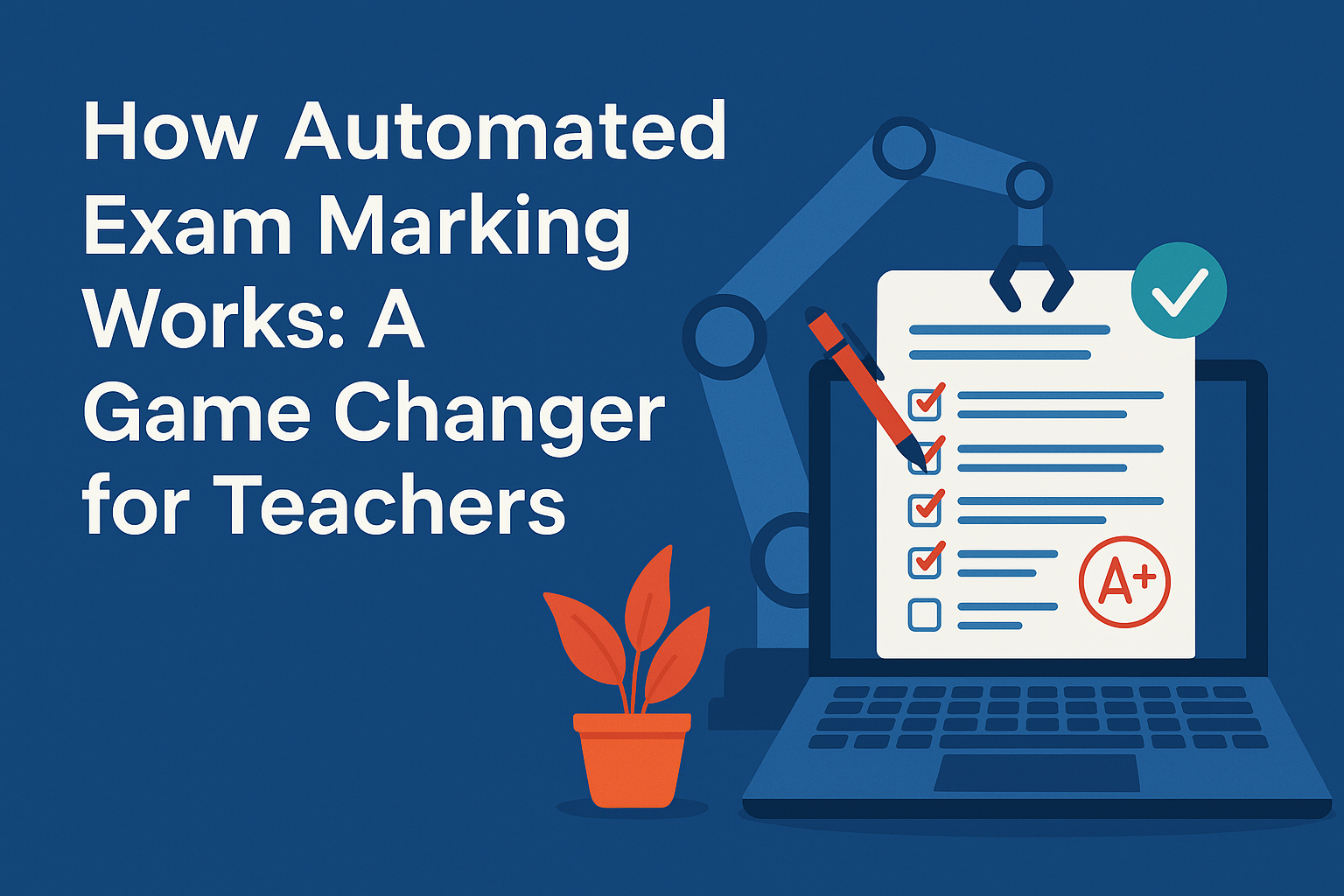🧠 Why Time-Outs for ADHD Kids Don’t Work — And What to Do Instead
They’re not being manipulative. They’re dysregulated. Discover a more connected approach to discipline that actually supports your child’s ADHD brain. 💛
🚫 What Time-Outs Teach ADHD Kids (And What They Don’t)
The classic parenting advice goes something like: “Put them in time-out until they calm down.” But here’s the truth for ADHD kids: time-outs rarely calm them — they disconnect them. 😞
Children with ADHD struggle with emotional regulation and impulse control. Isolating them when they’re already overwhelmed only reinforces the message that their big feelings are unacceptable.
“Time-outs teach children that when they’re most in need, they will be sent away.” — Dr. Mona Delahooke, Child Psychologist
It’s not about permissiveness. It’s about connection. And research shows that connection — not punishment — is the key to long-term behavioral change in neurodivergent kids.
🧠 The Neuroscience of Emotional Dysregulation
ADHD is a neurological condition. Your child’s brain isn’t wired to pause, reflect, and correct when they’re dysregulated. In fact, during a meltdown, their fight-or-flight system is hijacking the controls.
- 🔥 The amygdala (emotional center) is in overdrive.
- 💨 The prefrontal cortex (decision-making) is offline.
- 💥 Logical reasoning and consequences aren’t processed.
Sending a dysregulated child away doesn’t build skills. It builds shame. 😔 What they need first is regulation — co-regulation with you.
“You cannot discipline a brain that is in survival mode. First, you calm the storm. Then, you teach.” — Dr. Becky Kennedy
💛 Regulation Before Correction: What It Really Means
This phrase isn’t just trendy. It’s neurobiologically accurate.
Regulation before correction means that before we address behavior, we help our child feel safe and calm enough to even access the part of the brain that can learn and reflect.
✅ What That Looks Like:
- 🫂 Sitting quietly next to your child and breathing with them
- 💬 Saying: “I see you’re upset. I’m here.”
- 👂 Listening first before talking
This is not spoiling. It’s scaffolding. You're lending them your regulation until they can do it on their own.
🌈 Alternatives to Time-Out That Actually Work
Ready to ditch the punitive model? Here are ADHD-friendly alternatives that build skills — not shame.
1️⃣ Time-Ins 🧘♀️
Instead of sending them away, stay close. A time-in means offering calm companionship until the child is ready to talk or decompress.
2️⃣ Calm Corners 🪷
Create a sensory-safe spot at home with soft pillows, squish toys, coloring books, noise-canceling headphones, or calming visuals.
Teach your child to use the corner when they feel overloaded — not as punishment, but as empowerment.
3️⃣ Collaborative Problem-Solving 🧠🫱🏽🫲🏾
Once calm is restored, use a three-step CPS approach:
Step 2: “I wonder what was going on…”
Step 3: “What can we try next time together?”
This approach fosters communication, responsibility, and growth — without fear.
“Discipline means to teach — not to punish.” — Dr. Ross Greene, Author of "The Explosive Child"
😩 But What About Me? When You’re Triggered
Let’s be honest — sometimes, we’re the ones who need a time-out. When your child is screaming, throwing things, or testing boundaries, your nervous system is also at its edge.
🔥 Tips to Handle Parental Triggers:
- 🌬️ Walk away briefly (ensure safety) and breathe
- 💭 Use a mantra like “It’s not personal. It’s neurological.”
- 📞 Call your co-parent or support buddy for a vent
You can’t pour from an empty cup. Self-regulation is parenting gold. 💖
📘 Step-by-Step: Connected Discipline at Home
Want to implement this at home? Here’s a simplified path to get started:
- 1. Ditch the old scripts. No more “Go to your room!” or “You’re in time-out.”
- 2. Create your calm-down plan. Together with your child.
- 3. Model regulation. Deep breaths, name your feelings, co-regulate.
- 4. Repair after rupture. Always reconnect after big emotions.
- 5. Reflect together. “What can we try next time when this happens again?”
Connected discipline doesn’t mean letting everything slide. It means discipline that teaches and heals — not shames and isolates.
🧍♀️ Real Parent Voices: What Changed Everything
✨ Brenda, mom of 3:
“Time-outs made my son angrier. But when I sat beside him and said, ‘I'm not mad — I’m here,’ he melted into my lap. We both cried. It changed everything.”
✨ Carla, teacher & mom:
“I started using time-ins in my classroom and at home. The same kids I used to send out of class now run toward me for hugs. Connection is the real discipline.”
✨ Coach Melissa, Parenting Coach:
“You don’t fix behavior with isolation. You fix it with understanding, boundaries, and love.”
🎯 Final Thoughts: Build Skills, Not Shame
ADHD and time-outs don’t mix. But connection? That’s where the magic happens. With the right tools, mindset, and co-regulation strategies, you can discipline in a way that empowers both you and your child.
✅ Emotional regulation first
✅ No isolation during meltdowns
✅ Calm corners and time-ins
✅ Collaborative solutions
✅ Repair, reflect, reconnect 💛
🔗 More Gentle ADHD Parenting Guides:
- 👉 ADHD Morning Routines That Actually Work
- 👉 How to Discipline Without Shaming: ADHD Edition
- 👉 The Best After-School Routine for ADHD Kids
Your child isn't broken. And neither are you. 💪 Let’s connect, not correct.
 SmartExaminers
SmartExaminers


